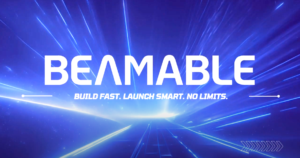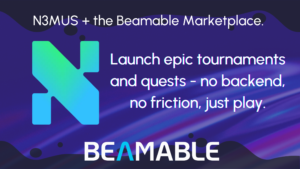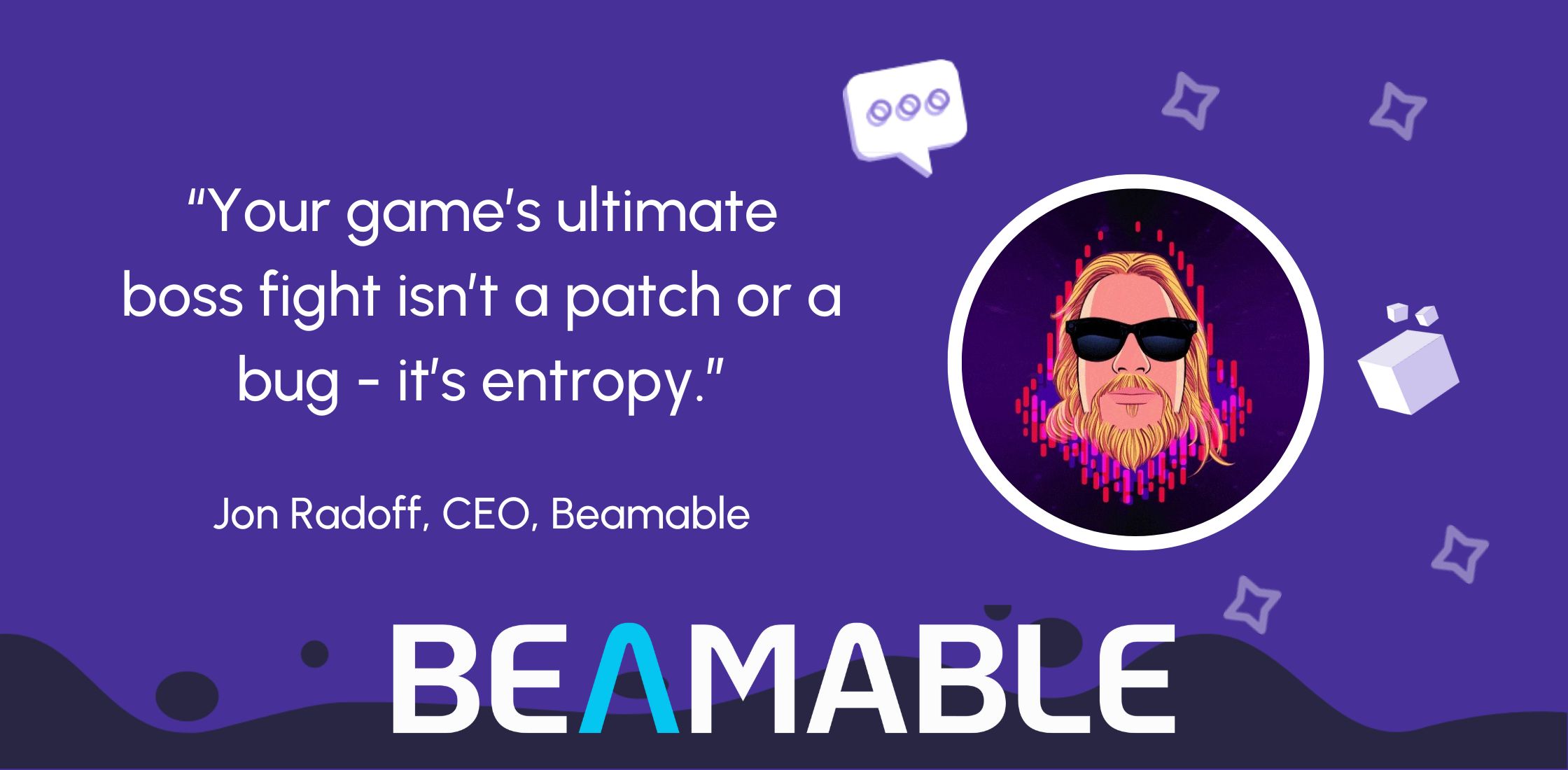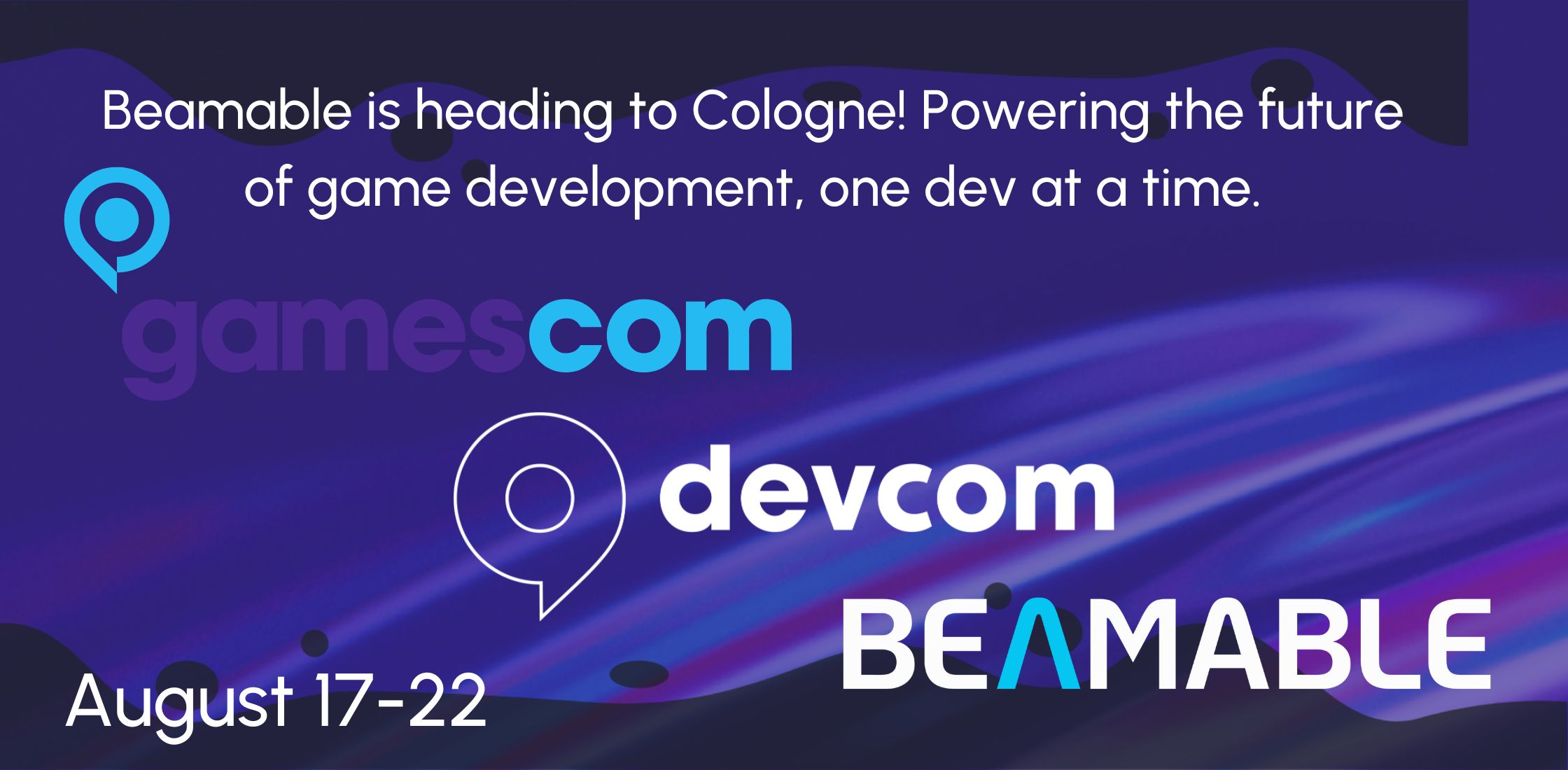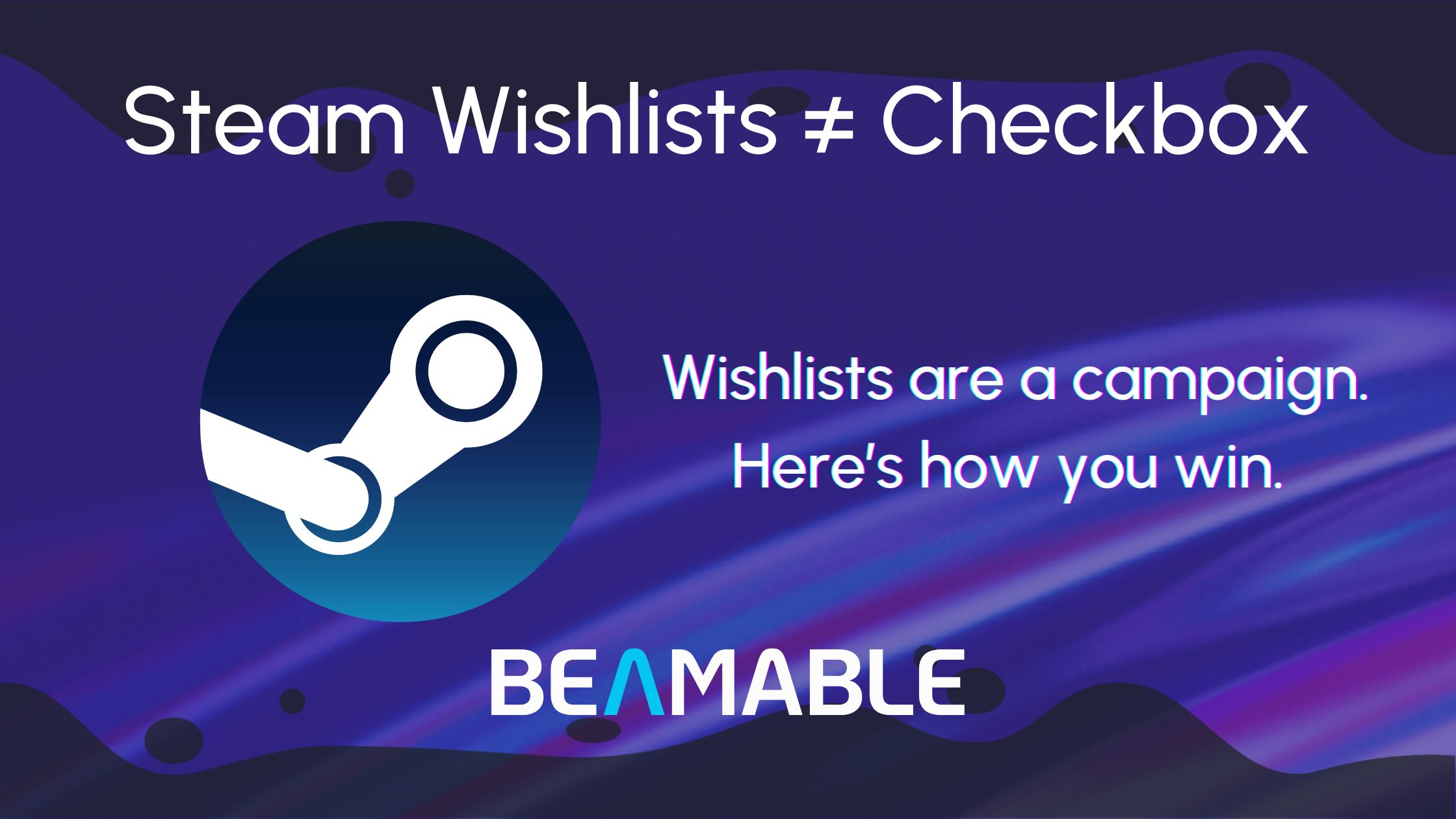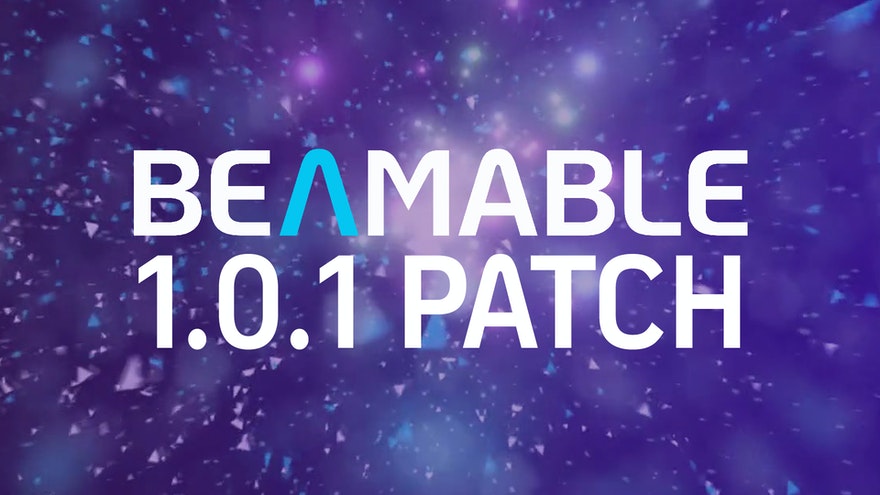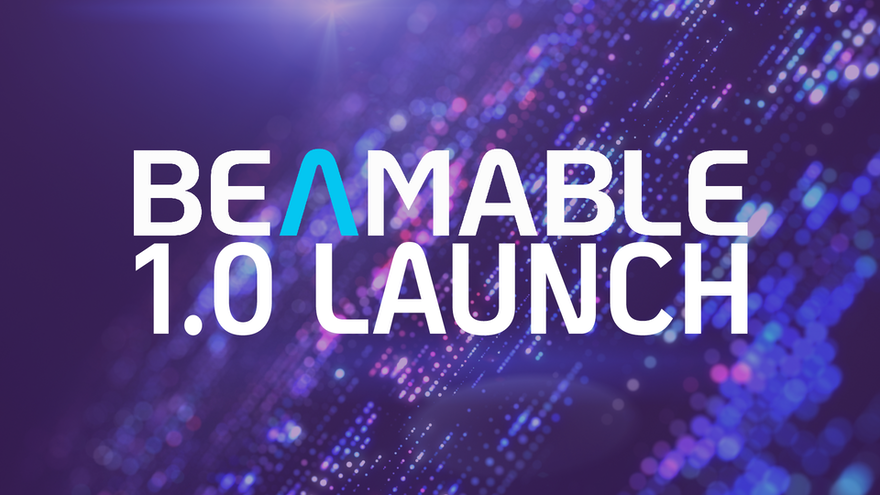Category: Product
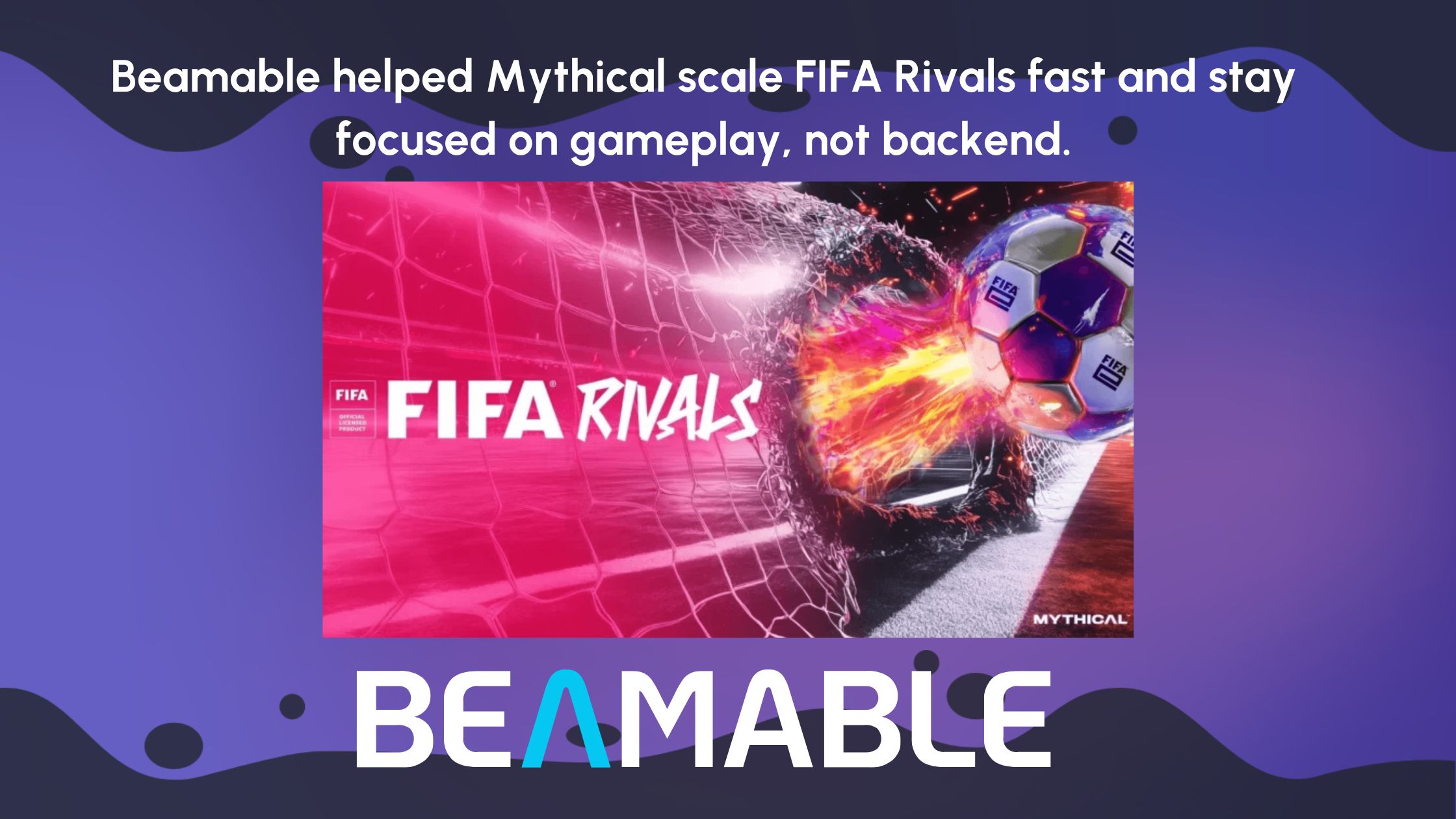
How Beamable Supported Mythical in Scaling FIFA Rivals and Staying Focused on the Fun
When FIFA Rivals launched globally, it quickly rose to the top of the charts and earned strong App Store ratings of 4.8 stars out of 5. Behind the scenes, the other real success story was their infrastructure. The game is on track to reach tens of millions of players, and Mythical Games knew that backend bottlenecks couldn’t be part of the equation.
They needed stability, scalability, and the ability to iterate fast. So they made a foundational decision early on:
Mythical chose Beamable’s Private Cloud
Our single-tenant backend gave them:
- Full customization of infrastructure and service sizing
- A long-term source code license for maximum flexibility
- Deployment on their timeline and terms, with zero reliance on shared infrastructure
Fast Backend Implementation
Mythical integrated Beamable and launched FIFA Rivals in under 9 months. With Beamable’s Unity-native SDKs and game-centric services, they avoided months of backend engineering and were able to focus on building features that players would love.
Hybrid Inventory and Web3 Integration
Using Beamable’s extensible inventory and currency systems, the game supports:
- On-chain assets from Mythos
- Off-chain items and currencies tied to gameplay and progression
- A unified system for managing interoperable economies across Web2 and Web3
LiveOps, Monitoring, and Support
Beamable supported Mythical not only before launch, but as an embedded partner in live operations:
- Extensive load and scale testing pre-launch
- Real-time performance monitoring post-launch
- Issue resolution and operational support from a team with deep experience scaling Star Trek, Game of Thrones, Disney, FOX, and other major IPs
Velocity Without Distraction
The biggest win? Mythical was able to focus entirely on gameplay and iteration, not backend plumbing.
In the final month before launch:
- They shipped multiple feature updates
- Tuned based on player behavior and KPI trends (like retention and engagement)
- Responded rapidly to feedback thanks to Beamable’s tools and LiveOps infrastructure
The takeaway: Mythical didn’t slow down for infrastructure – they accelerated because of it.
That’s the Beamable difference: infrastructure that gets out of your way so you can focus on the fun.
Build Fast. Launch Smart. No Limits.

Beamable’s New Versioning System: Clarity and Flexibility for Our Developers
At Beamable, we’re committed to making the development experience as smooth as possible, and that starts with how we manage our software versions. In our latest update, we’re making some important changes to our versioning system. Here’s a breakdown of what you need to know:
Semantic Versioning: A Commitment to Clarity
We’re embracing semantic versioning as our guiding principle. This means that you can expect no breaking changes in minor or patch releases. By sticking to this structure, we ensure that any changes we make won’t disrupt your project unless explicitly marked as a major update.
However, this might result in more frequent major versions than what you’re used to. While major releases often sound daunting, they signal that we’re introducing significant improvements or structural changes, like new technologies or features.
What Each Release Means
To help you navigate updates with confidence, here’s a simple breakdown of the types of releases you’ll see from Beamable:
- Patch Releases: These are small, targeted bug fixes. Think of them as quick, isolated fixes for very specific issues—like squashing a null reference bug in a particular function. Patches are designed to be safe and straightforward to apply.
- Minor Releases: A bit more substantial, minor releases could include groups of bug fixes, feature enhancements, or even new features. These updates are often low-risk, focusing on improving your development experience without overhauling systems.
- Major Releases: These signify larger changes, often including breaking changes that impact how systems are designed or function. For example, when we expand a feature set—like introducing new technology into Unity (such as the Unity Stand Alone Micro Services feature)—you’ll see a major release. These are opportunities to unlock powerful new capabilities, but they may require changes on your end.
Named / Flagship Releases!
In addition to the standard version numbers, we use named releases (now referred to as flagship releases) to signify particularly important milestones. These labels act as “tags” on a version, highlighting major moments in Beamable’s development. For instance, you might see a release labeled “Beamable Mercury,” but that doesn’t necessarily correspond to a major version. It’s just a tag to signify a significant update.
Managing Updates in Your Workflow
While we’re working hard to make updating as smooth as possible, we understand that integrating updates into live or in-development projects can be tricky. Here’s how you can manage Beamable updates across different stages:
- In-Development Projects: Feel free to incorporate new minor and patch releases regularly to benefit from the latest bug fixes and features. If a major release arrives, take the time to assess whether the changes will impact your project before upgrading. When you do, try and keep in mind that major upgrades after release are inherently harder to do than before release.
- Live Ops Projects: For live projects, be cautious with updates, especially major releases. We recommend creating a separate test environment to validate any updates before rolling them out to your live environment. We recommend scheduling dedicated time to upgrade whenever you can afford and will get something out of the latest release. Delaying updates too much might force you to do it at inconvenient times and can have an impact in the time bug-fixes become available due to backporting constraints.
- Maintenance Mode Projects: If your project is in maintenance mode and only receiving minor bug fixes, be conservative with updates. Stick to patch releases to ensure stability, and only consider larger updates if absolutely necessary.
A Final Word
While we’ve set up this versioning system with careful planning, we also understand that software can be unpredictable. Even with the best intentions, bug fixes might occasionally introduce behavioral changes. As a best practice, always treat updates with a degree of caution and thoroughly test new releases within your workflow.
We’re excited about these changes and believe they’ll help keep Beamable both reliable and flexible as we continue to evolve our platform.
Let us know what you think, and feel free to reach out if you have any suggestions on how we can make this process even smoother for your team!
Happy developing!

Beamable Launches New Leaderboard Sample Project for Game Developers
Beamable is pleased to announce the release of its new Leaderboard Sample Project for Unity, designed to streamline the integration of leaderboard services into your game. This project offers game developers a powerful, efficient way to implement leaderboards, enabling rich player engagement through tournaments, events, and power-based ranking systems.
Overview
The Leaderboard Sample Project provides a practical, minimalist example for integrating group-based leaderboards, supporting tournament, event, and total power leaderboards. By using this sample, developers can easily implement group and individual score tracking with robust reward mechanisms, saving time on backend implementation.
Key Features
- Tournament Group Leaderboard: Automatically generates group-based leaderboards for each tournament cycle, ensuring group and individual scores are tracked effectively.
- Event Group Leaderboard: Handles real-time score tracking across both individual and group leaderboards during events.
- Total Power Leaderboard: Displays player rankings based on total power, calculated from in-game inventory or assets.
Simplified Leaderboard Integration
This project is designed to help developers integrate leaderboard services with minimal effort, while offering full control over customization and functionality. Here are the core benefits:
1. Automated and Reliable Leaderboard Creation
The sample automates leaderboard creation upon the first score submission, but also includes manual fallback mechanisms to ensure leaderboards are generated even in cases where automation fails. This guarantees complete and accurate score tracking for all players and groups.
2. Effortless Group Score Management
For games with group-based competitions, the Leaderboard Sample Project simplifies the process of managing group scores. The system automatically aggregates individual scores to calculate and display group rankings, eliminating the need for manual score summation. Even if a group’s leaderboard isn’t generated, the script ensures group scores are calculated and displayed correctly.
3. Seamless Integration with Beamable Stats Service
Beamable’s stats service is deeply integrated into this project, allowing the retrieval and management of key player metrics like tournament or event points. If no points are available for a player, the system can assign a default score, ensuring all players can participate in leaderboards from the start.
4. Comprehensive Support for Multiple Leaderboard Types
The sample supports a variety of leaderboard types to meet different gameplay needs:
- Tournament Leaderboards: Automatically cycle through tournament phases with individual and group score tracking.
- Event Leaderboards: Track player progress in real-time during live events.
- Total Power Leaderboards: Summarize and rank players based on their total in-game assets or power levels.
5. Total Power Leaderboard for Player Ranking
The project also includes a leaderboard specifically designed to track player rankings based on their total power. This is particularly useful for games where player progression is tied to asset collection or strength accumulation. The system automatically calculates power from inventory data and updates the leaderboard accordingly.
Efficient Reward Systems and Banning Features
The sample project integrates a reward system that allows developers to configure and distribute rewards based on leaderboard performance. This functionality is handled seamlessly through Beamable’s API, ensuring that rewards are accurately distributed to top-performing players or groups.
Additionally, the sample provides mechanisms for banning and unbanning groups from leaderboards, ensuring the integrity of competitive play. Developers can easily manage banned groups through a dedicated service, ensuring those groups are excluded from leaderboard rankings.
Get Started with Beamable
The Leaderboard Sample Project is available now on Beamable’s GitHub repository. With extensive documentation and built-in customization options, this project provides game developers with a comprehensive solution for adding competitive leaderboards to their games with minimal development effort.
Whether you are running tournaments, organizing events, or tracking player progression, the Leaderboard Sample Project equips you with the tools you need to enhance player engagement and foster competition in your game.
Experience how Beamable can simplify your leaderboard implementation and start building competitive features today.
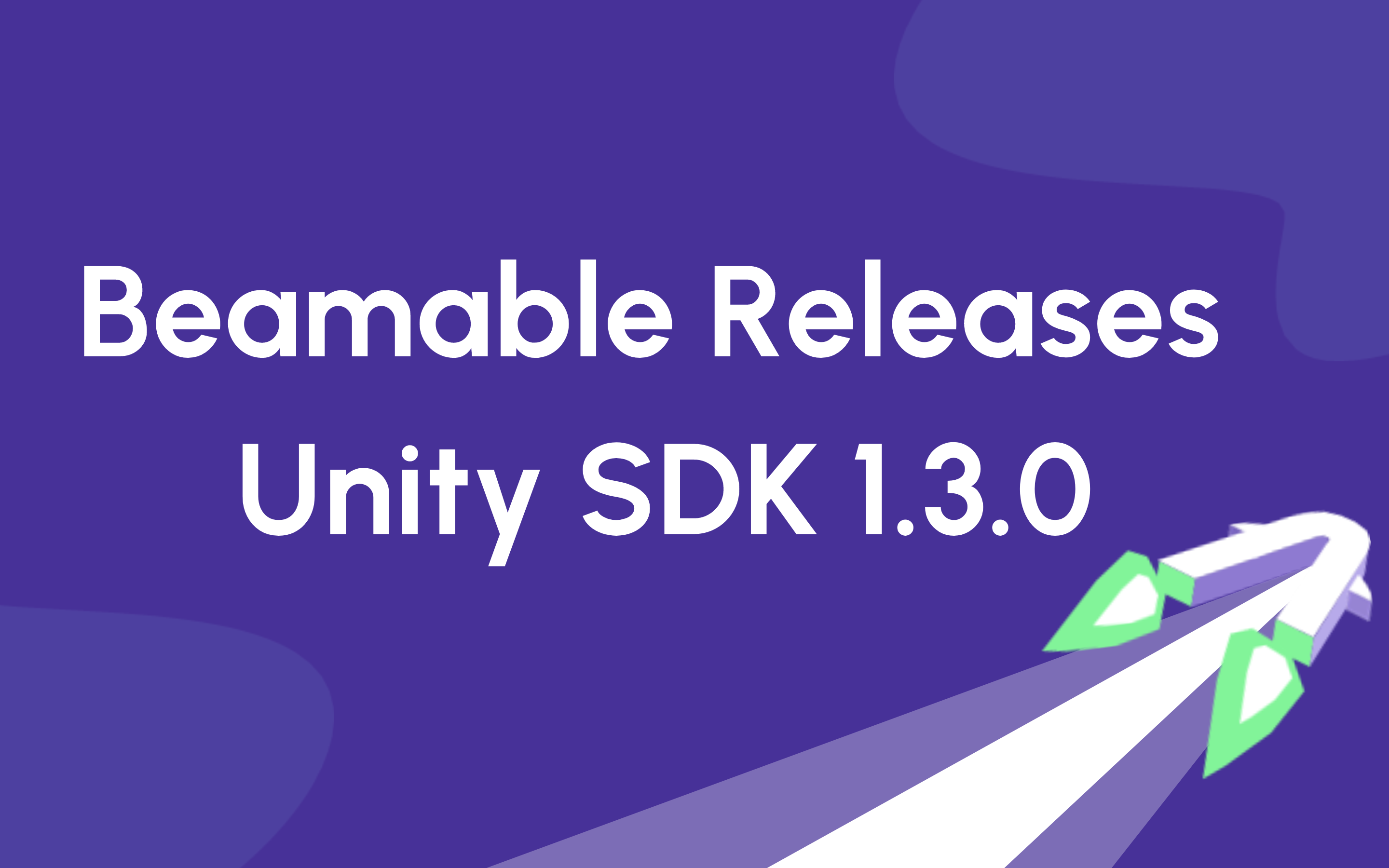
Beamable Releases Unity SDK 1.3.0
Beamable is happy to announce the release of our Unity SDK 1.3.0. You can read about all of them in the changelogs, and see the highlights below. Also, check out the demo video with Beamable Engineer Chris Hanna as he walks you through the newest features!
Better Microservices
Microservices are a major focus of Beamable 1.3. Perhaps the largest improvement is the ability to archive microservices that you no longer need. When you archive a microservice, you can delete all of the relevant local files, and remove the microservice from your future deployments.
Speaking of deployments, Beamable 1.3 adds a verification phase to the deployment process so that microservices that fail to start won’t be allowed to deploy to the realm. The deployment process can take a long time, so in 1.3, we’ve made sure you can alt-tab away from Unity and focus on other work while the deployment is in progress.
Additionally, if you’ve decided to disable a service, Beamable 1.3 will not upload the service, which saves you time. Beamable will now accept microservices built for ARM and AMD-based CPU architectures. You can select which architecture to use locally as well as for deployments by using the settings in the Project Settings / Beamable / Microservice window. There are also several improvements for local development speed, such as pre-fetching the Beamable base Docker image, caching Dotnet and NuGet restore flows, and consolidating startup actions.
Workflow Enhancements
Beamable 1.3 has several improvements for the developer workflow in Unity, such as realm permissions, Beamable environment switching, and various bug fixes.
As a team lead, you can use the Live-Ops Portal to manage realm permissions for team members. Beamable will respect these permissions on a per realm basis, so that a developer can be an admin on their personal development realm, allowing them to publish content and microservices, but only be a tester on the production realm.
If a developer wants to experiment with the latest and greatest Beamable packages, they can change their manifest.json file to point to the nightly track of Beamable package releases. However, the nightly Beamable builds use Beamable’s internal development servers. Until Beamable 1.3, this meant that you’d need to create a new customer account on the nightly track to test new features. Now, you can use the Environment Switcher in Window / Beamable / Utilities / Change Environment to select between Beamable’s development or production servers. Learn more about the environment switcher here: https://docs.beamable.com/docs/unity-editor-login
More Functionality
Beamable 1.3 brings new functionality for social interactions between your players. The new managed Friend system allows players to invite, block, or remove other players as friends. Learn more in the docs here: https://docs.beamable.com/docs/friends-feature-overview
The Beamable Party SDK is available as a preview feature and allows your players to form groups before entering the Lobby flow.
Chat SDK capabilities have been added to the Microservices SDK.
Finally, you can access request headers in the Microservice which empowers you to make decisions based on the player’s application version, or Beamable version. Learn more about it here: https://docs.beamable.com/docs/microservices-code
Detailed ChangeLogs
Full changelogs can be found at:
- https://github.com/beamable/Changelogs/blob/production/com-beamable-changelog.md
- https://github.com/beamable/Changelogs/blob/production/com-beamable-server-changelog.md
Get Started!
To try Beamable for your game project, sign up for free today!

How Beamable Enables Worry-Free Game Operations
Non-developers need a place to go to their operate their game and the Beamable LiveOps Portal gives creators the ability to deploy content error-free without engineering. By using Beamable’s LiveOps Portal, game creators get access to important reports needed to measure the success of your game, including Analytics such as:
- How many unique total players you have per month (MAU)
- How many active players you have per day (DAU)
- How many of those users are returning users that have played previously (Retention)
Beamable even includes KPI’s out of box that will help you determine the success of your game, give you an understand of core player behavior and showing advancement towards key monetization goals for your game.
The portal also gives makers the power to download overall player analytics or dive into the player profile page and go into each individual’s statistics.
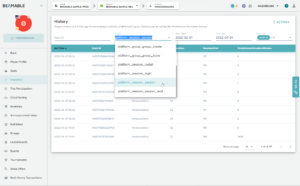
Want to try out our LiveOps Portal for free? Sign up for Beamable today.

Use Beamable And One Line Of Code To Unlock The Power Of LiveOps
Beamable, combined with Unity, empowers developers to utilize powerful and flexible solutions to communicate with their players and interact with their game through four LiveOps features: Events, Announcements, Notifications and Mail.
Live Events:
Events give the ability to set up one-time competitions with support for multi-phase events that can be done over a finite time, increasing both social and competitive engagement among players. Beamable can be used to even tell players how they are doing through leaderboards and can be used to distribute rewards to the player base based on their performance during the event.
Announcements:
In-game Announcements increase engagement and revenue, often with a multiplier effect from an engaged player base. Beamable’s Announcement Live Ops feature allows development teams to speak to use their game to speak one-to-many through our unique communication platform. Beamable even supports Announcements as a pre-fab, helping developers save time and integrate announcements as fast as possible.
Notifications:
Beamable’s Notifications system gives developers the power to provide their players real time updates based on server data, and can be used, much like Announcements, to communicate one-to-many.
Mail:
Mail systems are also being used increasingly more in many games, especially on mobile, and Beamable gives devs full access to an in-game Mail system, enabling one-to-one narrowcast communication between a developer and their playerbase.
Want to unlock the power of Beamable Live Ops today? Sign up for free and check out Beamable today!
